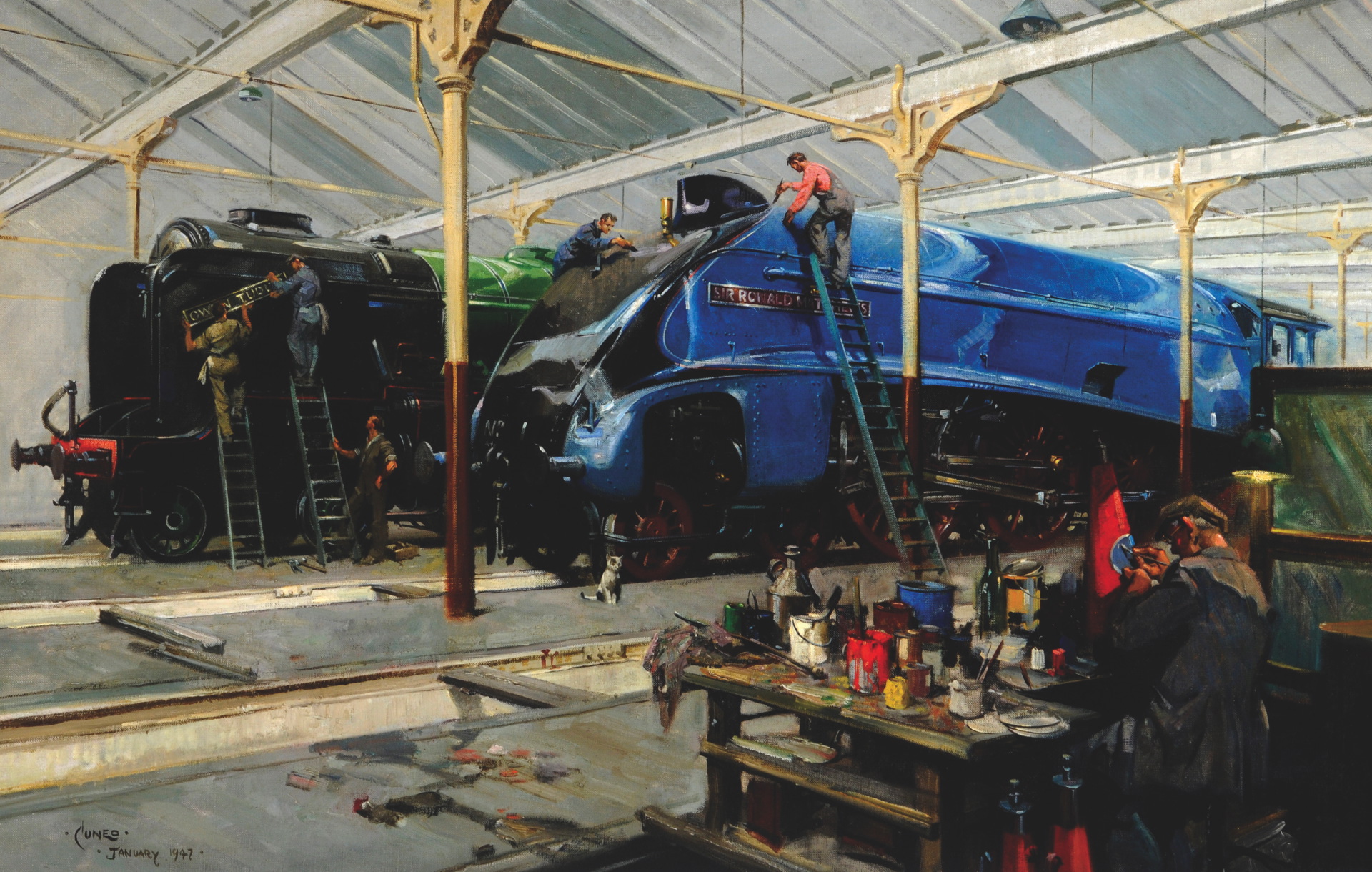You might have expected photography to displace painting when it came to depicting the modernity of post-war Britain but for Terence Cuneo it was the more traditional art form that worked best.
A major retrospective of his work in Hull shows how his paintings of trains, motorways and aeroplanes were perfectly suited to a country aiming to shrug off austerity, according to curator Andrew McLean.
“He was actually very much of the moment. His paintings exuded colour and excitement – exactly what was needed in a Britain emerging from the gloom of the Second World War,” says McLean, assistant director of the National Railway Museum.
“He was commissioned to capture the great innovations of both the Never Had It So Good and the White Heat of Technology years. His commissions included many recording the latest great feats of British engineering: motorways, electric railways, jet aircraft and the Forth Road Bridge amongst many others.
“His desire for realism saw him sketch in situ – often risking his life – such as the occasion he climbed up the Forth Bridge in a howling gale to capture the scene of an express train steaming across the most iconic railway bridge in the world.”
Cuneo’s parents were artists who met while studying under Whistler in Paris, and his uncle was also an acclaimed painter. Cuneo, born in London in 1907, went to the Slade School of Fine Art but became a more traditional artist than many turned out by the renowned institution at the time.
“You could argue that it was in his genes,” says Ian Blatchford, co-curator and director of the Science Museum Group, which has supplemented its own extensive Cuneo collection for the exhibition with new loan material.
“His father Cyrus covered many of the subjects that his son became famous for, including railways, royal occasions and aircraft. However, Terence Cuneo’s vigour and verve were such that his very best of works mark him out as a unique artist so one could also argue that he was maybe not as traditional as one might initially imagine.”
The exhibition, which opened last month as part of Hull City of Culture, features Cuneo’s drawings for the Ministry of Information during the Second World War, his well–loved railway paintings and posters, and his portrayal of a different type of power – politicians and royals. He was the official artist for the coronation of Queen Elizabeth II in 1953 and, off his own back, painted Winston Churchill lying in state.
But it was a far less towering figure than the war-time prime minister that figured much more prominently in Cuneo’s work. From 1954, his paintings featured a small mouse, usually tucked away on the canvas somewhere, hard to detect.
Blatchford says: “As Cuneo painted one of his commissions for the Queen’s Coronation in 1953 his cat Cleopatra brought a dead mouse into his studio. As relief from the formal painting he painted a portrait of a mouse eating cheese, which he later included in a show of his works. It was his first painting to sell at that show. From then on this good luck symbol became common to all his works.”
Painting Power: The Art of Terence Cuneo is at the Brynmor Jones Library, Hull University, until 15 April
Like the Big Issue North on Facebook



Leave a reply
Your email address will not be published.